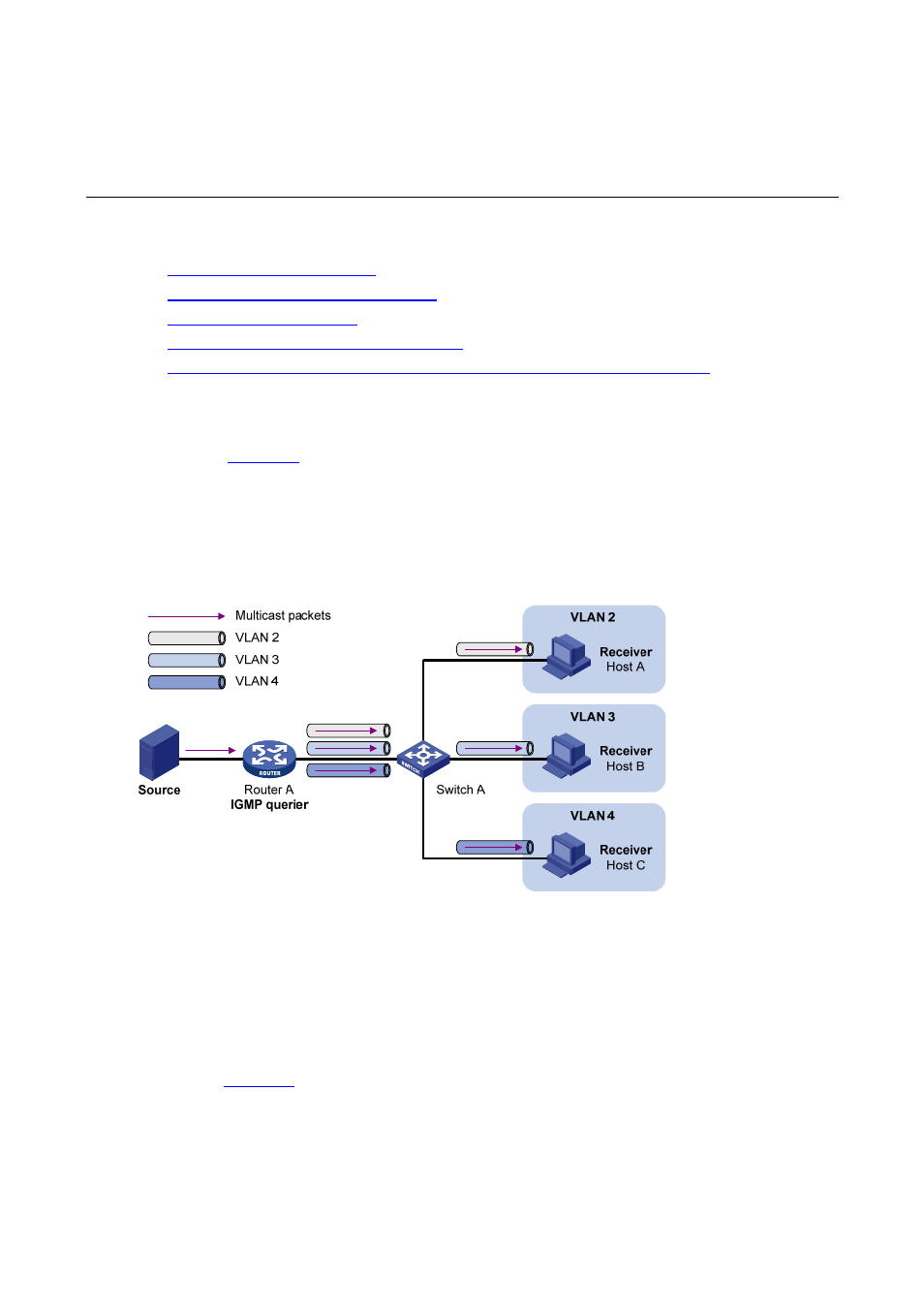3 multicast vlan configuration, Introduction to multicast vlan, Multicast vlan configuration – H3C Technologies H3C S5120 Series Switches User Manual
Page 338

2-1
3
Multicast VLAN Configuration
When configuring multicast VLAN, go to these sections for information you are interested in:
z
Introduction to Multicast VLAN
z
Multicast VLAN Configuration Task List
z
z
Displaying and Maintaining Multicast VLAN
z
Multicast VLAN Configuration ExampleMulticast VLAN Configuration Examples
Introduction to Multicast VLAN
As shown in
, in the traditional multicast programs-on-demand mode, when hosts, Host A,
Host B and Host C, belonging to different VLANs require multicast programs on demand service, the
Layer 3 device, Router A, needs to forward a separate copy of the multicast traffic in each user VLAN to
the Layer 2 device, Switch A. This results in not only waste of network bandwidth but also extra burden
on the Layer 3 device.
Figure 3-1 Multicast transmission without multicast VLAN
The multicast VLAN feature configured on the Layer 2 device is the solution to this issue. With the
multicast VLAN feature, the Layer 3 device needs to replicate the multicast traffic only in the multicast
VLAN instead of making a separate copy of the multicast traffic in each user VLAN. This saves the
network bandwidth and lessens the burden of the Layer 3 device.
The multicast VLAN feature can be implemented in two approaches, as described below:
, Host A, Host B and Host C are in three different user VLANs. All the user ports
(ports with attached hosts) on Switch A are hybrid ports. On Switch A, configure VLAN 10 as a multicast
VLAN, assign all the user ports to this multicast VLAN, and enable IGMP Snooping in the multicast
VLAN and all the user VLANs.
